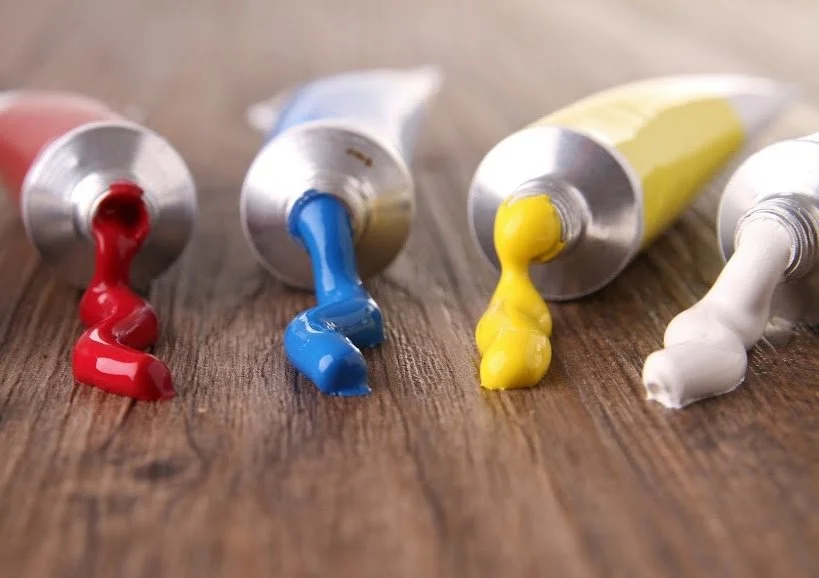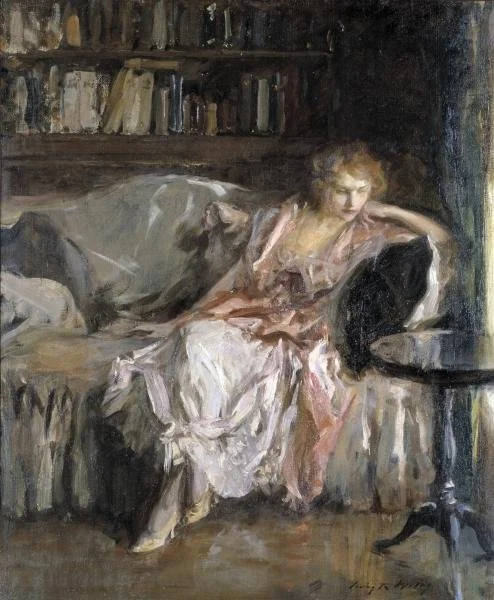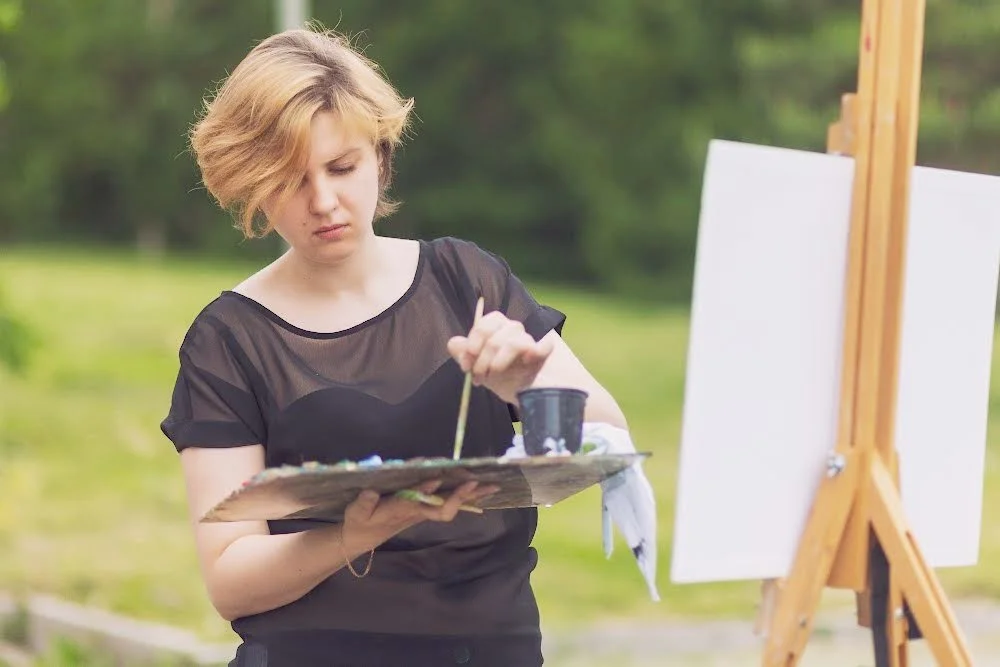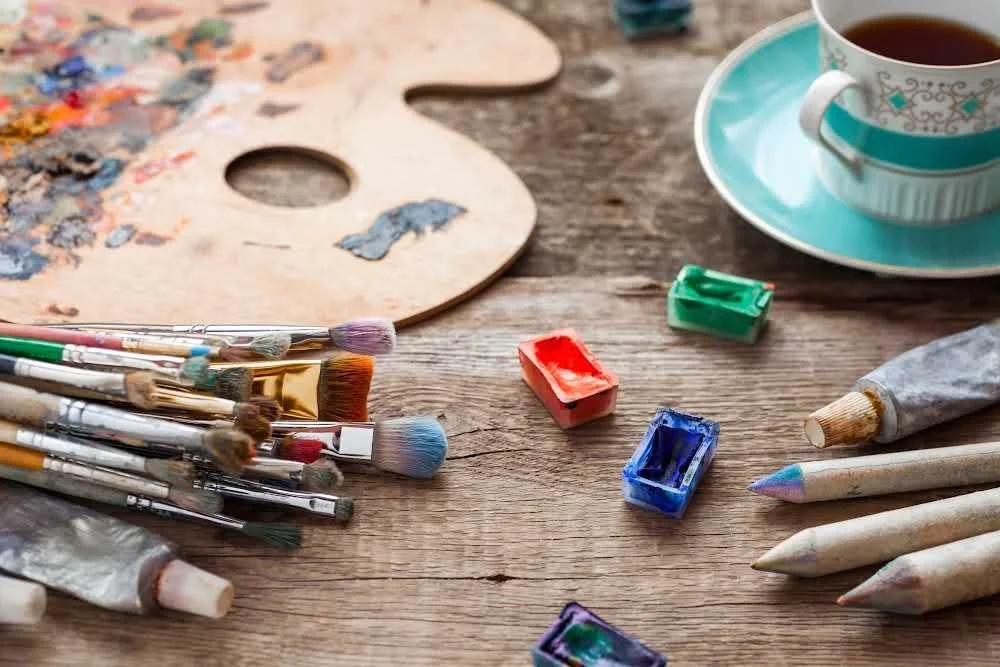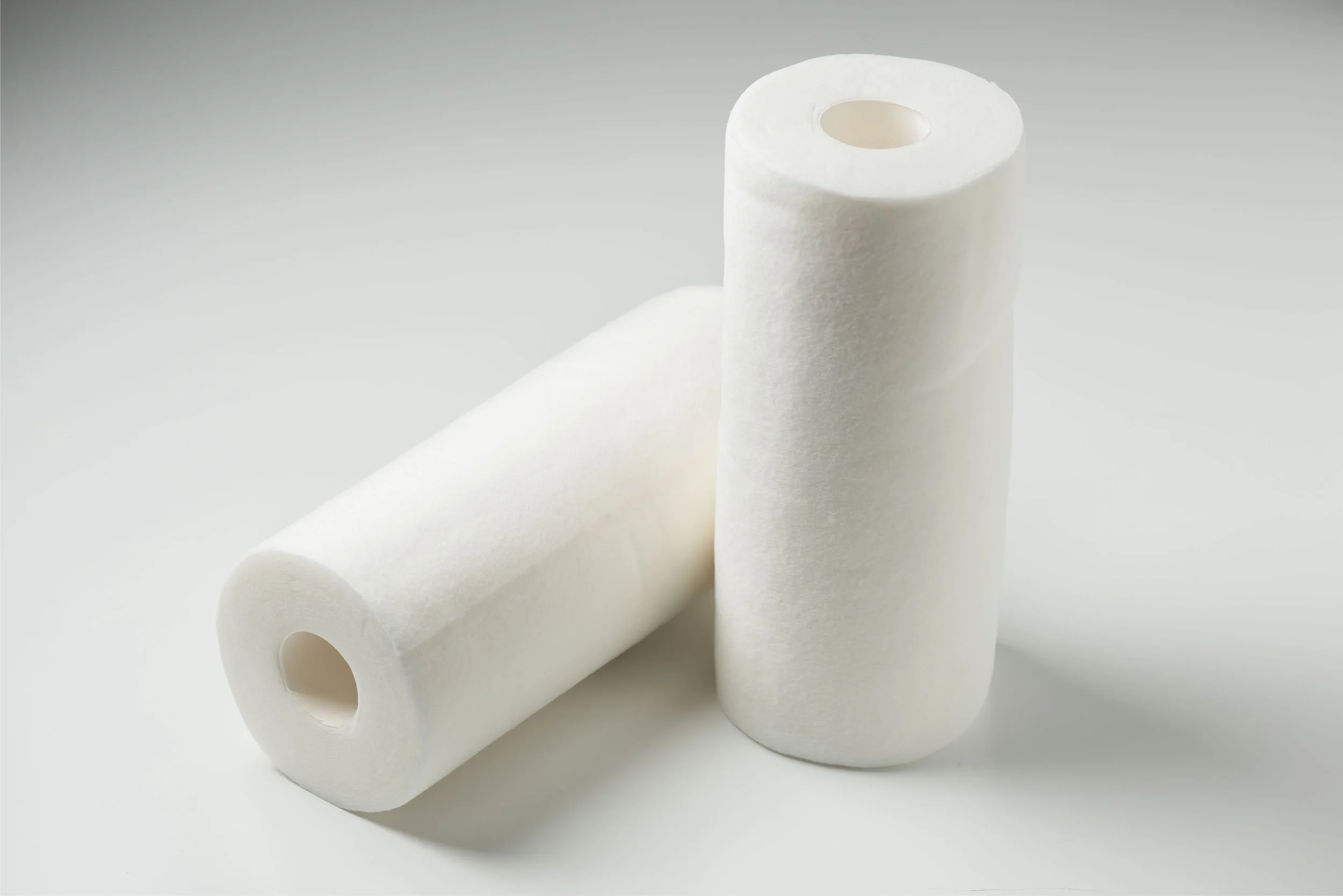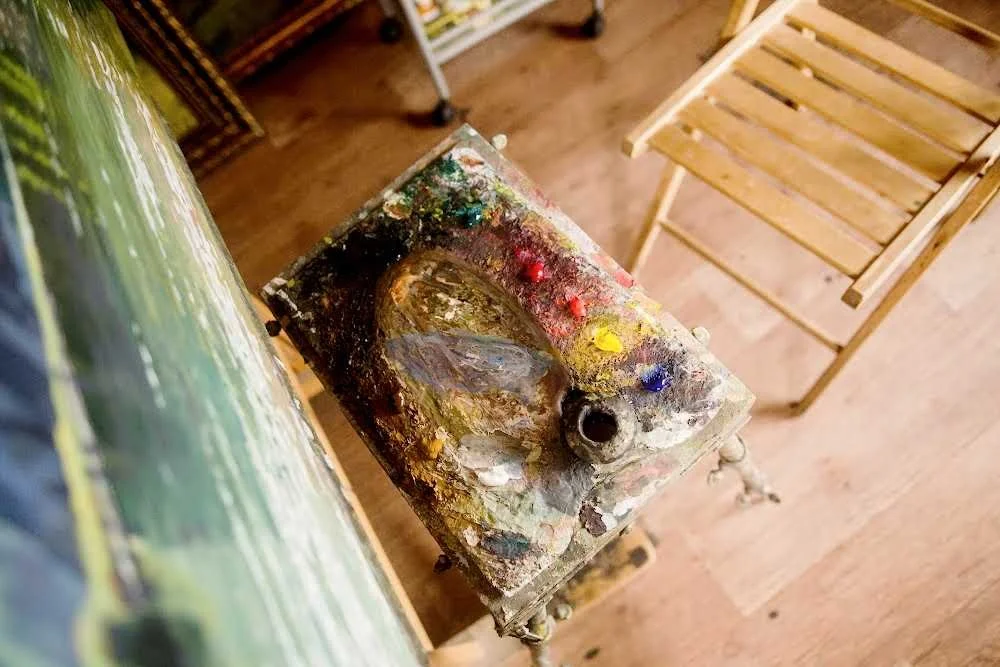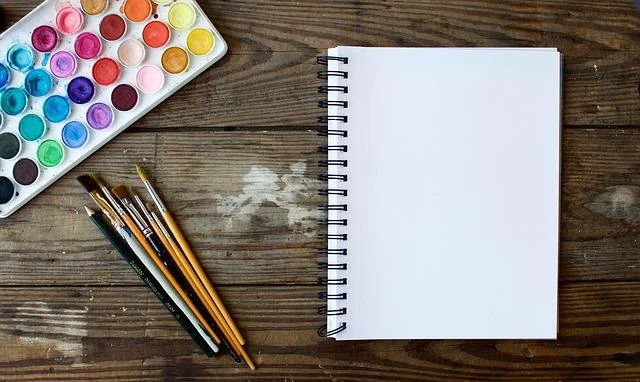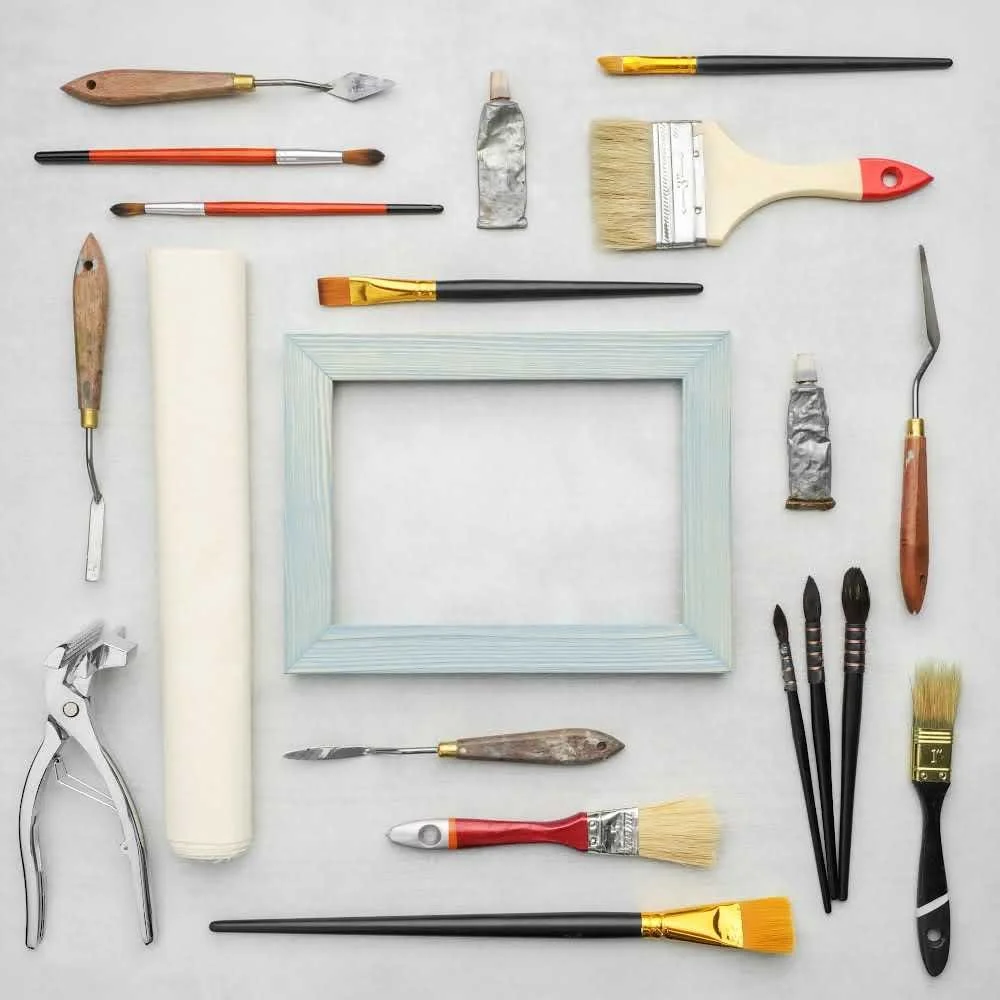【Painting Materials】Oil, Watercolor, Acrylic, Pastel Explained
When you enter an art supply store, there are various painting materials, and you may not be able to judge which one to use and how it is different just by looking at it.
That's why I summarize the types of painting materials in this blog. I hope it helps you to find the supplies you like.
【Painting Materials 1】Oil Paint
Oil paints were used by old super-famous masters such as Leonardo da Vinci, Monet, Van Gogh, and Picasso. Even after hundreds of years, its popularity has not diminished, and it brings a sense of luxury and depth to the finished work.
In addition, oil paints have a more comprehensive range of light and dark than other paints.
Using varnish, you can create a glossy surface like a protective film on the painting.
How many colors do you need for oil painting?
It's overwhelming to choose oil paint because there are too many colors and brands.
At first, I chose 20 colors that I liked.
But as you probably guessed, we don't need that much.
If you have white, red, black, yellow, and raw umber (one of the earth colors),
you can paint most of the subjects.
Please refer to the blog that explains the painting materials for beginners.
Does oil paint dry darker?
Oil paints are the most stable among acrylic and watercolor.
Acrylic paints darken as they dry.
Watercolor paints become lighter, on the other hand.
In contrast, oil paints dry slightly darker.
However, each layer tends to become darker, so it is a good idea to draw a little lighter initially.
Do you need a medium for oil paint?
In short, yes.
However, you'll be fine as long as you have two types of medium.
One is making the oil paint thinner, and the other is making it thicker.
Thinning medium example is Odorless Mineral Spirits.
Although oil paints are opaque, you can also dilute them with a thinner.
But it's only for underpainting. We don't finish the painting with a thinner.
The thickening medium includes linseed oil and stand oil.
*Usually, we mix stand oil with odorless mineral spirits in the proportion you need.
It is best to use the minimum required.
Mixing too much will result in yellowing over time.
When you use oil, please add it little by little to adjust the velocity.
Is the smell of oil paint strong?
Be sure to use oil paint in a well-ventilated place because it emits an odor.
You can paint in the backyard, balcony, or an extra room with an air purifier or windows open.
Some mediums also generate a pungent odor, so if you want to paint solvent free, give spike lavender oil a try.
Drying speed of oil paint
Oil paintings dry much slower than other paints.
Depending on the color of the paint, it may take more than a week (e.g. Zinc White)
Slow Drying Paints
Basically, white paint dries slowly.
However, you can speed up the drying process by mixing it with a quick-drying medium.
Or, you can choose the oil paint with the quick-drying medium already added.
Fast Drying Paints
Earth tones dry quickly, but those still take a day or two (e.g., raw umber).
In comparison, acrylic and watercolor dry in 10 to 30 minutes, so they are often mistaken for being easier to handle than oil paintings.
In fact, oil painting is often easier for beginners because you can fix the errors while the paint is still wet.
You can take it off with a palette knife while it's wet, or it's OK to layer more opaque oil paints on top after it's dried.
The thickness of oil paint
Put brighter colors and thicker paints on where you want the viewer to see.
By the way, even if you put thick paint with acrylic, the volume will decrease once it dries. Therefore it will not be as impactful as oil paint.
If you have never used oil paint but are interested in trying it, please refer to
Although the list is pretty long, you don't need all of them initially.
I picked what a beginner need.
Cleaning up oil paint
Contrary to watercolor, oil painting takes a little time to clean up.
However, if you find it too much work to wash the brushes every time, wipe them with a paper towel and soak them in oil (e.g., salad oil, baby oil). You can lay them aside till the next painting session.
Before using the brushes next time, wipe off the oil with a paper towel. Then, rinse it with odorless mineral spirit and wipe it clean with a paper towel. Now, the brush is ready to use.
Please wear an apron if you don't want the oil paint to get on your clothes. But it's still better to wear something you don't mind getting ruined.
Water-soluble oil paint
Have you ever heard of water soluble oil paint?
It is recommended for those who want to use oil paints but don't like the cleaning process or are allergic to medium.
Since it is water-soluble, it has the advantage of being washable with water, just like watercolors.
There are also mediums exclusively for water-soluble oil paints, so if you use them, the finished work will be more vivid than if you dissolve the pigments in water.
Differences in oil paint manufacturers
Of the many manufacturers, buy a few different brands to find out which one suits you best.
Depending on the manufacturer, the paint may be soft or hard; even if it is the same color, there may be slight differences. The best way is to try and find your preferences.
Do you recommend an artist grade?
There are student grades and artist grades: the student grade contains a small amount of pigment and a large amount of binder.
The artist grade has better colors; you can express what you want with fewer paints.
If you want to use something that is a little expensive but has good coloring, artist grade is your choice.
However, if you're using a tiny bit of paint because you are concerned about the price, it's best to buy a student grade.
That to be said, choose the artist grade for the bright colors.
For example, you don't need a lot of Quinacridone Magenta or Phthalo Blue.
You can't substitute that vividness with the student's grade.
【Painting Materials 2】 Watercolor Paint
Watercolors seem more popular than oil paints, especially in Japan.
All you need are watercolor paints, paper, and a brush. Then, even if the colors get on clothes, you can wash them off quickly.
That's why kids paint with watercolor all the time.
It's also easy to clean up.
Watercolor is a fun medium to work with whether you paint at home or outdoors.
The downside is that you can't paint on most materials other than paper, but there are many types of watercolor papers to choose from.
Watercolor paper type
Sketchbook
Sketchbook type is very popular because various sizes are available. It's also portable. That's why both beginners and advanced watercolorist prefers sketchbook.
Pad
You can peel off each sheet attached to the pad to frame the finished artwork. In addition, you can choose from various sizes as well.
Block
The block type is made by sticking about 20 sheets of drawing paper with glue so they will not come off on all sides.
Cut the glue from a small opening with a knife when peeling off.
Roll
However, please flatten the paper before using it. You can put heavy items (e.g., books) on top of the paper overnight.
Or soak the paper in water for 20 seconds and lay it flat on a wood board, and tape all four sides with gumstrip tape for watercolor.
Sheets
The paper has already been cut, so you'll choose the size you want.
Watercolor paper surface
The rough surface has a prominent tooth or texture, the hot press is extra smooth, and the middle between the two is the cold press.
Rough
Rough is suitable for landscape painting or any textured paintings.
Cold Press
The cold press is the most popular because it is suitable for most painting styles.
Hot Press
The hot press is suitable for expressing delicate subjects such as portraits or anything involving realism.
Watercolor paper thickness
Less than 300msg/140lb
Paper quality less than 300msg is not recommended for watercolor painting.
The colors don't mix well on paper, and it'll tear if you add several layers.
You'll feel that you are not good at painting even though the problem is probably the quality of the paper.
300msg/140lb
300msg is the best weight for beginners to get started. You can paint without stretching the paper unless you are concerned about buckling.
640msg/300lb
640msg is the heaviest watercolor paper.
Professionals often use this at exhibitions, but if you are interested, please give it a try.
The price is relatively high.
Watercolor paper materials
Cotton
Cotton is the most recommended, but considering the price, I think using wood pulp for practice is okay.
First, 100% cotton absorbs and keeps the water on the paper surface long enough.
Because the surface is strong, you can use the layering technique or add masking fluid.
Wood pulp
Wood pulp is more affordable than cotton.
But the wood fibers don't hold much water on the surface long enough.
It'll dry quickly and is challenging to make gradations.
Mixed cotton and wood pulp
Finally, there is also a mixture of cotton and wood pulp paper. After all, by adding wood pulp, the price is lower than 100% cotton.
Watercolor paint type
Watercolor has many different types, such as a tube or solid styles.
Watercolor tube type
The paint is in a tube, and you'll put it out on a palette to use.
When you work on a large-sized painting, using the tube type is the most convenient way.
Besides, all colors are vivid because we haven't added water to dilute them.
By the way, I love the tube type the most because it's easier to make dark colors.
You can also arrange your favorite colors on the palette.
Watercolor pan type
You can find a whole pan and half pan watercolors.
Both tube and pan types are good quality as long as they are artist grades. Please choose it according to your preference.
If you want to use it outdoors, the pan type is easier to carry.
If you use the pan type, put a few drops of water before the painting session can activate the paint for easier use.
Watercolor cake type
The cake type is convenient to carry, and you can choose from two transparent or opaque styles.
Watercolor paint color modification
Many people often use watercolors in art classes at school. However, I think that is why people misunderstand "simple" as "easy."
Because watercolor is a familiar medium, we tend to think it's easy to start. But in reality, watercolor is quite challenging to control.
Even if you made a mistake, it is hard to correct the color.
Start with moistening the area you want to repaint, and rub it with a sponge or a brush. Some watercolor paper brands are easy to lift (wipe off the color), but they often don't return to the original white paper.
There are also mistakes that you just simply can't erase.
Masking Fluid
You can preserve the whiteness of the paper with masking fluid.
*The paint doesn't get where the masking fluid is applied, so if you remove the masking fluid after the paint dries, the area will remain untouched.
【Painting Materials 3】 Acrylic Paint
Acrylic paint is made by mixing acrylic resin and pigment, adding a glossy feeling.
Benefits of acrylic paint
Affordable price
Compared to watercolors and oil paints, it's a reasonably affordable price.
The procedure is simple and clear
Unlike oil paints, it doesn't crack. So you don't have to follow specific orders to apply the paint.
When you take the paint out of the tube, you can use plenty of water to dilute it to watercolor quality.
Easy to gradation
Acrylic paint is a paint that is easy to gradation.
You'll be able to apply gradation beautifully just with two colors and a broad brush. Ideal for painting the sea and sky.
Water resistant and quick drying
Acrylic paint dries quickly; once it dries, the layer is no longer soluble in water.
It can be used in combination with watercolors.
Paint the bottom layer with acrylic paint, let it dry, and then use watercolor paint from above to create more gradation.
By doing so, the paint in the lower layers will not come off even if you apply multiple coats.
Can you draw anywhere?
Acrylic paint can be used on paper, wood, canvas, cloth, and glass.
Acrylic paint type
Tube Type
The most popular is the one in the tube because those are easy to use and convenient to carry.
You can buy either one color at a time or a complete set.
Acrylic heavy body type
It's thick like butter, but also smooth.
Acrylic ink type
It flows like water, yet the colors are high in concentration.
You'll probably be captivated by the vividness.
Note: Acrylic gouache is different
Acrylic color and acrylic gouache are different, so be careful when purchasing.
Acrylic is included translucent to transparent paints, but acrylic gouache is primarily opaque.
【Painting Materials】 Pastel
Pastel has a high pigment content, so it develops rich colors, but some brands are expensive.
The powder will fall as you paint with soft pastel, but don't blow it away!
Because inhaling the pastel dust in the air isn't good for your health.
Cadmium is especially toxic, so wipe it off with a damp towel.
Pastel types
Hard pastel
Hard pastel contains a little more adhesive than soft pastel, giving it a stiff finish. But it will break just by applying a little strong force.
Each stick is in the shape of a square bar, making it easy to use for sketching.
Soft pastel
Soft pastel is made of pigments as it has minimal adhesive.
It's very soft and can be used when you want to paint a large area.
It's better to start with soft pastel for underpainting shapes and finish with hard pastel for details.
Oil pastel
Oil pastel is stickier than hard and soft pastel because it contains wax and oil.
However, it's a popular pastel with more beautiful colors than crayons.
Pan pastel
Pan pastel is usually in a round plastic container.
The colors are very vivid and look beautiful when using the gradation technique.
You can use a sponge, fingers, palette knives, and stamps to apply the pan pastel to paper.
Pastel paper types
When choosing pastel paper, the most important things are tooth and texture.
The smooth paper has no tooth , so it's not suitable for pastel.
A strong surface is desirable, but 100% cotton paper is expensive, so wood pulp or mixed paper (cotton + pulp) is also suitable for practicing.
Drawing paper
If you are a beginner, starting with cheap drawing paper is a good idea. This is your financially friendly option.
Colored drawing paper
Anyone who loves pastel may have heard of Canson Mi-Teintes paper.
There are plenty of color choices, so you can choose a color that matches the work you want.
On the other hand, to emphasize the contrast between light and dark colors, try using dark paper for bright paintings and light paper for dark paintings.
Pastel sandpaper
The surface of the pastel sandpaper is strong. Therefore, you can not only use the multiple layering techniques but also add a little water or odorless mineral spirit to manipulate the pastels.
Painting Materials Summary
Oil painting summary
Minimum oil paint colors you need
Red(e.g., Cadmium red light)
Yellow(e.g., Yellow ochre)
Black(e.g., Ivory black)
White(e.g., Titanium white)
Brown(e.g., Raw umber)
Characteristics of paint
No discoloring after it dries, but the painting will turn yellow if you mix too much medium.
Paint in a well-ventilated place.
Drying is much slower than other paints such as watercolor, acrylic, etc.
The paint can be used as an impasto (thick texture).
You don't have to wash the brush every time just by soaking it in oil.
There are also water-soluble oil paints.
Medium
thin the oil paint down(e.g., odorless mineral spirit)
make the oil paint thicker(e.g., linseed oil)
You need two mediums at a minimum.
Grades
Student grade:Financially friendly
Artist's grade:Vivid colors
Watercolor summary
Watercolor paper type
Sketchbook
Pad
Block
Roll
Sheets
Watercolor paper surface
Rough(When you want to make the texture stand out)
Cold press(For any type of motif)
Hot press(For detailed artwork)
Watercolor paper thickness
less than 300gsm / 140lb (not recommended)
300gsm / 140lb (The easiest to use and affordable)
640msg / 300lb (Very expensive)
Watercolor paper material
100% Cotton(Best water retention)
Wood pulp(Surface easy to dry)
Mixed paper cotton + wood pulp(Affordable and easy to use)
Watercolor paint type
Tube type(Can paint dark colors)
Pan type(vivid colors and portable)
Cake type(Choose from transparent and opaque)
Watercolor paint characteristic
Easy to get started, no resistance
Difficult to correct mistakes
Use masking fluid to save the white paper
The quality of the painting changes depending on the quality of the watercolor paper
Acrylic summary
Acrylic paint benefits
Affordable price
The procedure is simple and clear
Easy to gradation
Water resistant and quick drying
Can paint on various support
Acrylic paint type
Tube type
Acrylic heavy body type
Acrylic ink type
Note: Acrylic gouache is different
Pastel Summary
Pastel type
Hard pastel
Soft pastel
Oil pastel
Pan pastel
Pastel paper type
Drawing paper(Use for lots of practice)
Colored drawing paper(Express the motif you want to draw in various atmospheres)
Pastel sandpaper(strong surface can take water and odorless mineral spirit)

